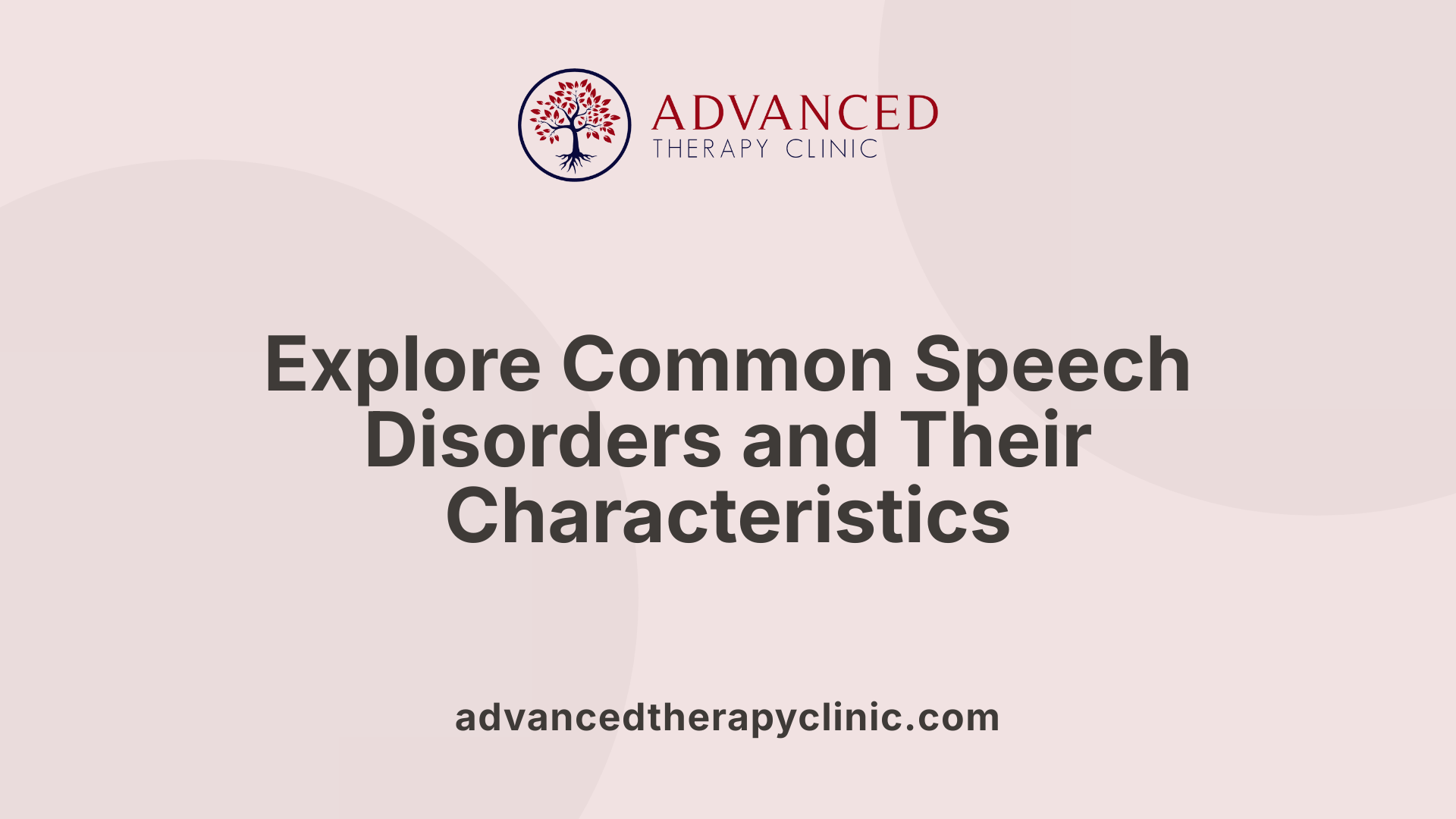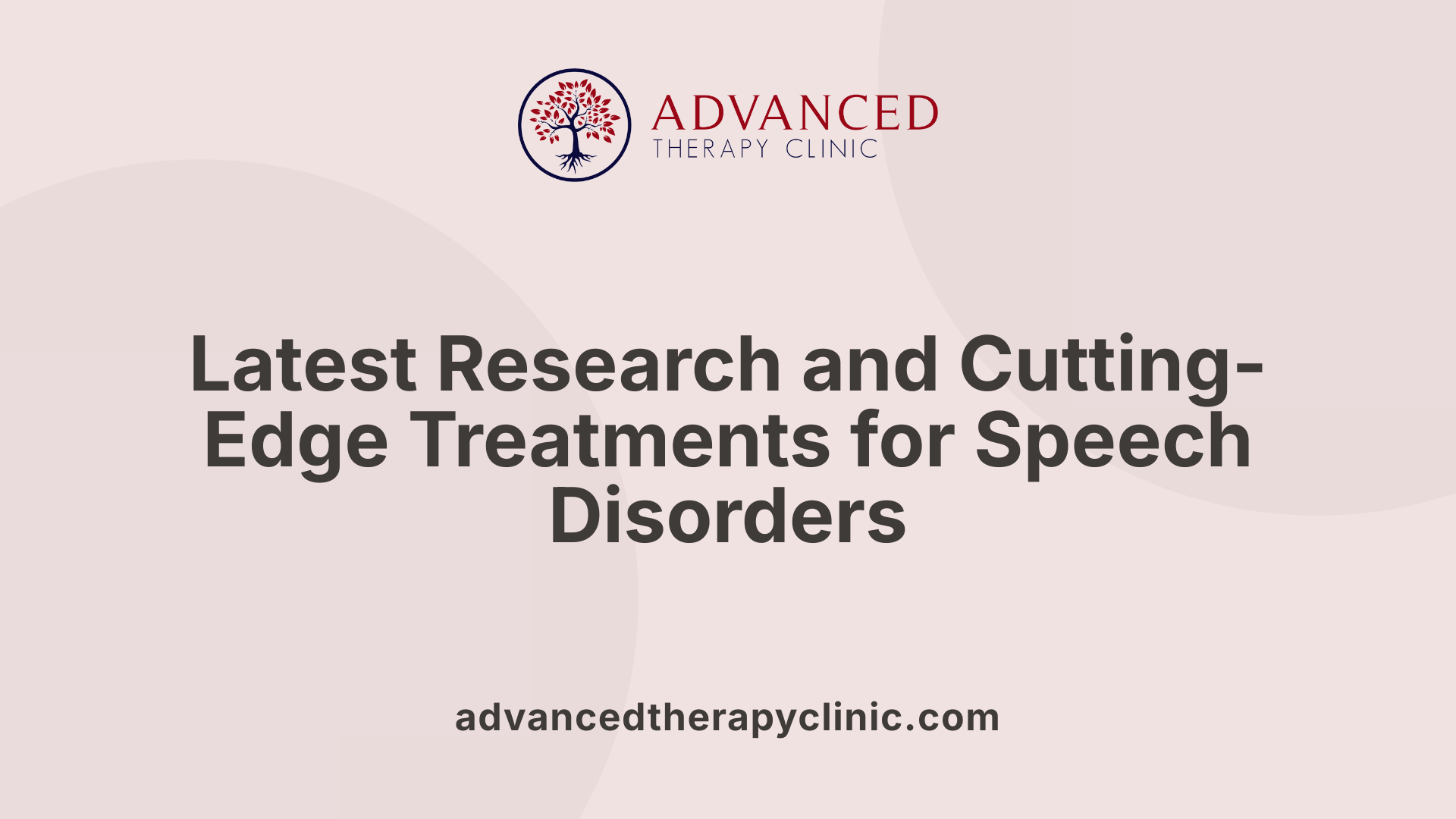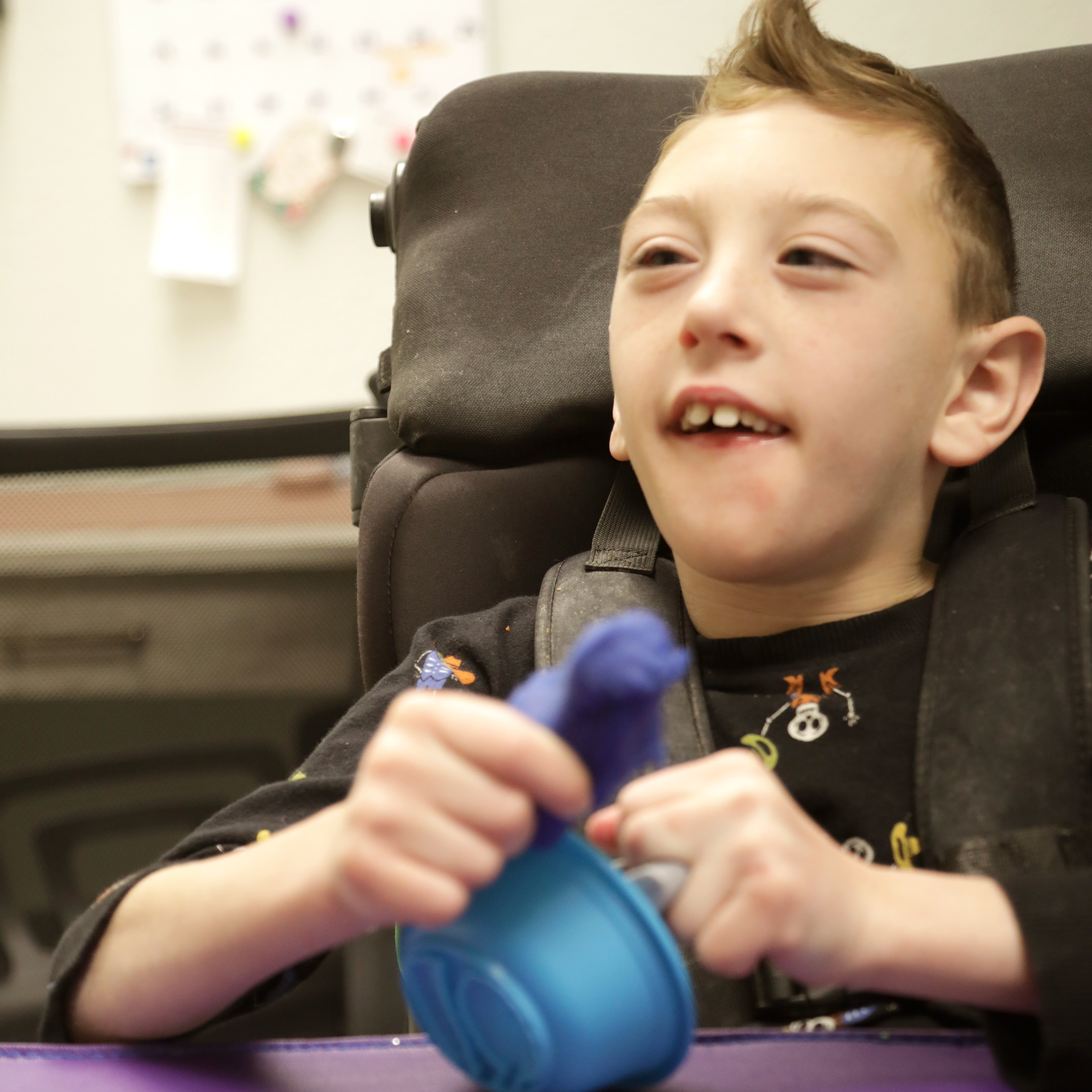Understanding Speech Disorders


An In-Depth Exploration of Speech Impairments and Their Impact
Speech disorders, also known as speech impediments, are conditions that hinder an individual’s ability to communicate effectively. These disorders can manifest in various forms, affecting speech production, clarity, fluency, voice quality, and comprehension. Understanding the different types, symptoms, causes, assessment methods, and treatments is essential for early diagnosis and effective intervention, ultimately improving quality of life for those affected.
Categories and Types of Speech Disorders

What are the common types of speech disorders?
Speech disorders encompass a range of conditions that impair an individual’s ability to speak clearly, fluently, or appropriately. The most common types include articulation disorders, where specific sounds are mispronounced; phonological disorders, involving patterns of sound errors that affect multiple words; fluency disorders such as stuttering, characterized by involuntary interruptions like repetitions or prolongations; voice disorders, which cause abnormal pitch, volume, or vocal quality due to physiological issues such as nodules or paralysis; resonance disorders, including hypernasality where excessive nasal sound is present, often caused by structural abnormalities like cleft palate. Additionally, language disorders—both receptive (difficulty understanding) and expressive (difficulty using words)—often coexist with speech disorders. These conditions can arise from various causes such as neurological damage, structural abnormalities, or hearing impairments. Early diagnosis and intervention by speech-language pathologists (SLPs) significantly improve communication outcomes.
What are the typical symptoms and causes of speech disorders?
Symptoms of speech disorders vary depending on the specific issue but commonly include difficulty pronouncing words, speech that is hard to understand, involuntary repetitions or prolongations (in stuttering), voice pitch changes, and abnormal nasal speech sounds. For example, a child with a phonological disorder might omit consonants, while someone with a voice disorder might experience hoarseness or breathiness.
The causes are diverse, including neurological conditions like stroke, traumatic brain injury, neurodevelopmental disorders such as autism spectrum disorder, and genetic syndromes like Down syndrome. Structural abnormalities like cleft palate or damage to vocal cords can also cause speech issues. Hearing loss, especially in childhood, can impact speech development and clarity. Other factors involve muscle weakness, nerve damage, growths, or tumors affecting the vocal apparatus, and developmental delays.
How are speech disorders diagnosed?
Diagnosis involves comprehensive evaluations by certified speech-language pathologists through a combination of interviews, case history, and standardized assessments. These assessments analyze speech patterns, muscle movements, voice quality, and language comprehension. Tools such as the Goldman-Fristoe Test of Articulation or specialized speech sampling techniques help clinicians determine the type, severity, and impact of the disorder.
Additional assessments may include hearing tests, neurological evaluations, and visual examinations of the vocal cords. Cultural and linguistic considerations are important; therefore, assessments are tailored to account for dialects or bilingual backgrounds. Continuous evaluation guides treatment planning and monitors progress.
What treatment options are available for speech disorders?
Treatment primarily involves speech therapy, which is tailored to the individual's specific disorder and needs. Techniques include articulation exercises to correct specific sounds, fluency-shaping strategies for stuttering, vocal exercises for voice disorders, and resonance training for hypernasality. Speech therapy might also involve context-based practice, contrast therapy to distinguish sounds, oral-motor exercises to strengthen muscles involved in speech, and use of augmentative and alternative communication (AAC) devices when necessary.
In some cases, additional treatments like physical therapy or neurological rehabilitation are used to improve muscle control or address underlying neurological issues. Early intervention usually yields better outcomes, and therapy can range from short-term to long-term depending on the severity. Support from family members and ongoing practice are vital for effective communication improvement.
What are common speech and language disorders in children?
In children, common speech and language disorders include articulation and phonological disorders, where children have trouble producing sounds correctly; developmental stuttering; childhood apraxia of speech, which affects motor planning; and dysarthria, involving weak or slow speech muscles. Language delays or disorders may involve difficulties in understanding (receptive language) or using language (expressive language). Children with these issues may struggle with forming sentences, following instructions, or expanding vocabulary.
Early diagnosis and intervention improve speech clarity, social skills, and academic success. Speech therapy methods tailored for children often incorporate play, storytelling, visual aids, and family involvement to promote engagement and skill development.
What are some developmental speech and language challenges?
Developmental challenges include delays in acquiring speech sounds, difficulties in syntax and grammar, and problems understanding or expressing ideas. Conditions like developmental language disorder (DLD), childhood apraxia of speech, and speech delays are common.
These challenges can hinder social interactions, learning, and emotional health if unaddressed. Factors contributing to developmental issues include genetic predispositions, neurological differences, hearing impairments, and environmental influences. Early intervention by speech-language specialists enhances communication abilities and overall development.
What are examples of specific speech disorders such as aphasia and articulation disorders?
Aphasia, typically caused by stroke or brain injury, affects the ability to produce and understand language, including speaking, reading, and writing. It is a language disorder rather than purely speech-related.
Articulation disorders involve errors in producing speech sounds, such as Lisping, substitutions, omissions, or distortions. For example, difficulty pronouncing 's' or 'z' sounds can be classified as articulation errors.
Other specific speech disorders include apraxia of speech, where the brain struggles to plan and coordinate muscle movements for speech, and dysarthria, characterized by slurred or slow speech due to muscle weakness.
Effective treatment involves targeted exercises and strategies by speech therapists, focusing on improving speech clarity, muscle control, and motor planning.
Assessment of Speech and Language Disorders

How can speech impairments be assessed?
Speech impairments are evaluated through a detailed and systematic process carried out by speech-language pathologists (SLPs). The assessment begins with gathering a thorough case history, which includes medical records, developmental milestones, and family input. SLPs use a combination of interviews and direct observation to analyze communication behaviors across various settings, such as home, school, or clinical environments.
A variety of assessment tools are employed to obtain a comprehensive picture of the individual's speech and language skills. These include standardized, norm-referenced tests that compare a person’s abilities to those of same-age peers, and criterion-referenced assessments that measure specific skills against predetermined standards. Non-standardized methods, such as language sampling and behavioral observations, provide contextual insights and help detect subtle speech issues.
Caregiver reports and self-assessment questionnaires may supplement formal testing, offering additional perspectives on communication in natural settings. The assessment process involves evaluating auditory, visual, motor, and cognitive functions, ensuring that speech difficulties are not confounded by other disabilities.
Dynamic assessment techniques involve testing a person’s current skills, providing intervention strategies, and then retesting to measure progress. This approach helps distinguish between language differences—common in multilingual or culturally diverse populations—and true speech or language disorders.
Technological advancements have added valuable tools to the assessment process. Speech recordings, transcriptions, and specialized software assist in analyzing speech patterns in detail. In some cases, imaging studies like MRI or CT scans are used to rule out neurological causes when appropriate.
Overall, these comprehensive evaluation methods enable clinicians to diagnose accurately, understand underlying causes, and develop effective, individualized treatment plans.
Are there ongoing research studies related to speech disorders?
Research in speech disorders is a vibrant and continually evolving field. Current studies explore diverse aspects of speech impairments, aiming to improve diagnosis, treatment, and understanding of underlying neural mechanisms.
Many ongoing projects focus on improving management techniques for conditions like non-organic dysphonia, and speech interventions for children with craniofacial anomalies such as cleft palate. Researchers investigate the effectiveness of various voice therapy methods and explore innovative technologies like artificial intelligence (AI) to recognize vocal fold lesions more accurately.
Emerging areas include stem cell therapy aimed at repairing vocal fold scarring and neurostimulation techniques like transcranial magnetic stimulation (TMS) and transcranial direct current stimulation (tDCS) for aphasia rehabilitation.
Advances in neuroimaging—such as functional MRI—are providing deeper insights into how neural networks support speech and language. This research helps identify neural markers for speech disorders and informs targeted interventions.
Furthermore, studies are examining bilingual speech development, caregiver perceptions of speech therapy outcomes, and the psychological impacts of communication challenges. Technological innovations, including telepractice platforms and computer-assisted therapy, are also under investigation for enhancing accessibility and efficacy.
Institutions, hospitals, and universities publish these findings regularly in scientific journals. Such research endeavors aim to refine diagnostic tools, develop personalized treatment options, and expand understanding of the complex biological, psychological, and social factors involved in speech disorders.
| Aspect | Focus | Examples |
|---|---|---|
| Management | Therapeutic interventions | Voice therapy, speech drills, neuromodulation |
| Diagnostic Tools | Imaging and technological innovations | MRI, AI recognition systems, neuroimaging |
| Research Topics | Causes, treatments, technology | Neural mechanisms, bilingual speech, caregiver views |
| Future Directions | New therapies and diagnostics | Stem cell therapy, telepractice, neurostimulation |
Understanding and treating speech disorders remains a multidisciplinary priority, with ongoing research promising new developments to support those affected.
Research and Advances in Speech Disorder Treatment

Are there ongoing research studies related to speech disorders?
Yes, there are many active research efforts aimed at understanding and treating speech disorders. These studies span across various disciplines including neurology, psychology, speech-language pathology, and biomedical engineering.
Researchers are exploring innovative management strategies and therapeutic techniques to enhance speech production and communication skills. For example, new therapies for non-organic dysphonia and speech interventions tailored for children with cleft palate are under investigation. These studies often aim to determine the most effective methods for different age groups and underlying causes.
Emerging therapies include the use of advanced technologies and biological approaches. One promising area involves stem cell therapy, which has potential to repair vocal fold scarring and restore voice function.
Neuroscientific research plays a crucial role in uncovering the neural mechanisms responsible for speech production. Neuroimaging techniques, such as MRI and PET scans, allow scientists to observe brain activity associated with speech and to identify abnormalities in individuals with speech disorders.
What are some recent advances and experimental approaches?
Recent developments include the application of neurostimulation techniques like transcranial magnetic stimulation (TMS) and transcranial direct current stimulation (tDCS), which aim to modulate brain activity to improve speech recovery. Studies have shown that these methods can enhance neural plasticity and support language rehabilitation, especially in stroke-induced aphasia.
The role of brain plasticity is a major focus, with researchers examining how targeted therapy can harness the brain’s ability to reorganize and form new neural connections to compensate for damaged areas.
Another frontier involves the integration of artificial intelligence (AI) and machine learning in speech therapy. AI-powered tools help recognize vocal fold lesions, track speech progress, and customize intervention plans, making therapy more precise and accessible.
How are technological advancements shaping treatment?
Technological innovations include high-definition video and remote telepractice platforms, allowing for more accessible and engaging therapy sessions. Wearable devices and speech analysis software enable real-time feedback and progress tracking.
In addition, research is testing the efficacy of electric and magnetic stimulation of specific brain regions to accelerate speech recovery. These techniques aim to target the neural circuits involved in speech planning and production.
What is the potential of stem cell therapy?
Stem cell research offers a promising avenue for regenerating damaged tissues, including vocal folds and neural pathways associated with speech. Experimental studies are exploring whether stem cells can repair nerve damage and improve voice quality, representing a potential breakthrough for patients with severe voice disorders.
Latest findings on neural mechanisms
Recent findings highlight the complexity of the neural networks involved in speech. Multiple regions, including Broca’s area, Wernicke’s area, and the motor cortex, coordinate during speech production.
Understanding these mechanisms helps refine therapies and develop targeted neural interventions. Studies show that stimulating or inhibiting specific areas can lead to measurable improvements in speech fluency and clarity.
| Research Area | Recent Focus | Implications for Treatment |
|---|---|---|
| Neurostimulation | TMS and tDCS | Enhanced neural plasticity and speech recovery |
| Stem cell therapy | Nerve and tissue regeneration | Potential to restore damaged vocal and neural tissues |
| Neuroimaging | Brain activity mapping | Better understanding of neural deficits and targeted therapy |
| AI and machine learning | Speech recognition and progress monitoring | Personalized and efficient interventions |
In summary, ongoing research continues to push the boundaries of traditional speech therapy, integrating cutting-edge science and technology to develop more effective and personalized treatments. As studies progress, the hope is that future approaches will offer quicker, more durable outcomes for individuals with speech impairments, ultimately improving communication and quality of life across diverse populations.
Enhancing Awareness and Support for Speech Disorders
Understanding speech disorders encompasses exploring their types, symptoms, causes, assessment methods, and available treatments. Advances in research and technology continue to shed light on the complex neural and developmental mechanisms involved, offering hope for more effective therapies. Early diagnosis and intervention remain crucial in mitigating long-term effects and improving communication capabilities. Supporting affected individuals through education, medical treatment, and social awareness fosters a more inclusive society where everyone has the opportunity to communicate and connect effectively.
References
- Speech Impairment: Types, Signs & Causes - Cleveland Clinic
- Speech disorders: Types, symptoms, causes, and treatment
- Speech disorders - children: MedlinePlus Medical Encyclopedia
- Help for speech, language disorders - Mayo Clinic Health System
- Childhood Speech and Language Disorders in the General ... - NCBI
- Speech Sound Disorders: Articulation and Phonology - ASHA
- Speech Impediment Guide: Definition, Causes & Resources
- Exploring 5 Common Speech and Language Disorders | MGH IHP
Recent articles

How Pediatric Therapy Helps Kids Thrive across Montana and Wyoming
A supportive guide for families exploring therapy options in Billings, Butte, Missoula or Sheridan.

How to Choose the Right Pediatric Therapy Clinic in Billings, Montana
A Parent‑Friendly Guide To Finding The Best Support For Your Child

Expressive Speech Delay 2-Year-Old
Understanding and Addressing Expressive Speech Delay in Toddlers

How Speech Recognition Works
Unlocking the Power of Speech Recognition in Therapy and Healthcare

Autism and Head Size
Understanding the Complex Relationship Between Autism and Head Size

Occupational Therapy in Autism
Enhancing Independence and Quality of Life Through Occupational Therapy in Autism

